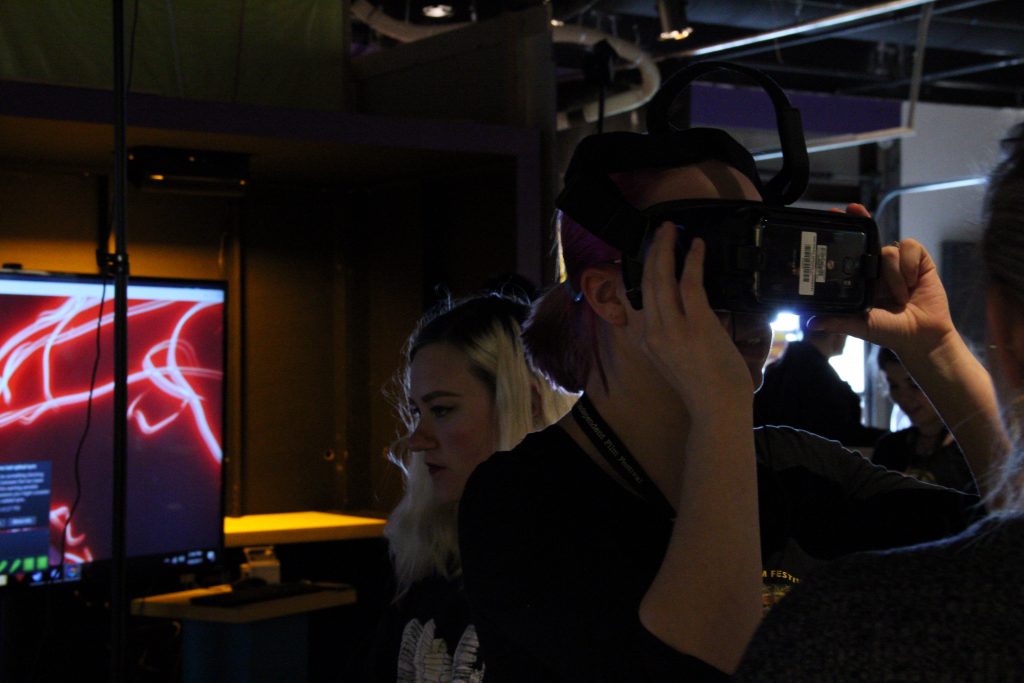
Last week Southern Oregon University made history with the start of Andrew Gay’s course that uses 360 degree virtual reality cameras. This state of the art technology has only just started to become accessible to amateur and even professional filmmakers in the industry.
“There are very few universities that have begun doing this,” said Gay. “My class is one of the first in the country to do a class like this, and it’s definitely among the first for undergraduates.” He explained that the University of Oregon’s Portland campus offers this technology for journalism students in their graduate program but as far as he knows his class is the first in Oregon that allows undergraduate students the opportunity to operate these types of cameras for use in documentaries.

“Interactive media is becoming more and more popular and evolving into new things, and I’ve always wanted to be apart of something new,” said SOU junior Sophia Miller, a student in Gay’s advanced documentary making class.
Because the development of this technology is so recent, professor Gay said he has had to recreate a curriculum from which his students can learn. “What I’ve basically told the students is that I don’t really see myself teaching the class so much as facilitating a co-learning experience,” he said. “We’re all going to be learning together, we’re all going to be teaching one another.”
“There’s literally no rules at all,” said Miller. “Everything that we’re going to be learning, we’re going to be learning for ourselves which is really interesting.”
Jim Teece, Project A President and SOU board member is interested in what 360 techniques mean for the future of films and was thrilled that SOU is among the first schools to be offering a course on this technology. “One of the coolest things about SOU is they expose the students to the leading edge of technology or at least the greatest in technology.”
According to Gay with new technology comes news concerns. “It raises all kinds of questions: how do you do this, how do you do it ethically, how do you do it in a way that’s enjoyable and meaningful for people,” he asked. “Thinking about the ethics of journalism and do people know they’re on record. Well, in a 360 field, everyone is on camera at any given point.”
Some of these problems were faced directly by Drea Cooper, a filmmaker who recently produced his first 360 documentary film for the New York Times, Policing Flint.
“As a documentary filmmaker, we’re used to being very close to our subjects and having a camera and being right there in the room with people, right next to people,” Cooper said. “That proximity is really important to the relationship and trust that you develop with people. In VR we felt like a lot of that was immediately challenged.”

“I mean there’s all sorts of challenges and we weren’t fully aware of the challenges until we just started doing it,” said Cooper. “How do you make something where you can’t be there all the time,” he asked.
Subject placement and camera placement are just a few things that come into question when using these 360 cameras that a filmmaker would not normally have to consider when working with a conventional camera. “Everything we know about using video expressively is based on the theory of a frame, and in these cameras there is no frame,” said Gay.
The Ashland Independent Film Festival offered a Virtual Reality exhibit at Science Works where Cooper spoke about his 360 experience. Richard Herskowitz, one of the AIFF staff, spearheaded the idea to feature the VR technology at the festival. “Independent film is where innovations begin in new kinds of film making,” he said. “The most interesting film festivals around the world are introducing people to this kind of work, and I wanted Ashland to do this as well.”
“There are these big moments in the evolution of the moving picture, and I think VR is one of those new steps in the evolution,” said Cooper.



